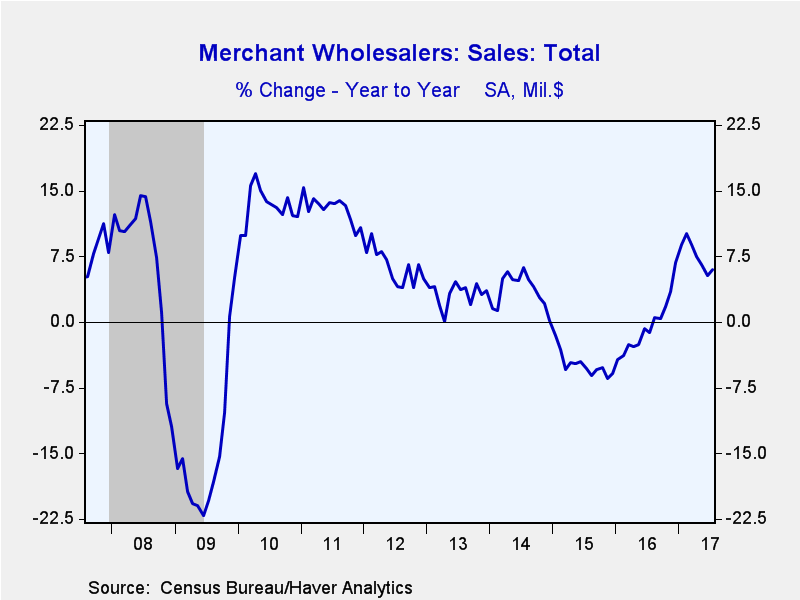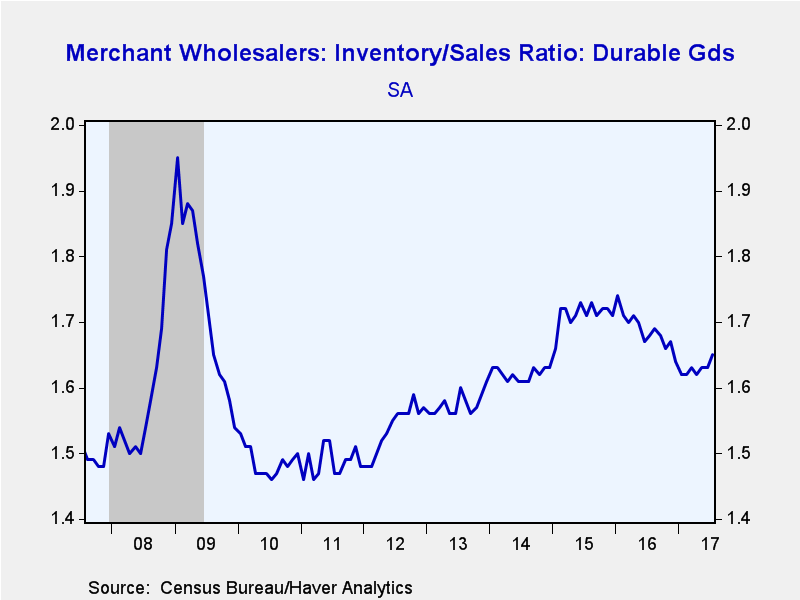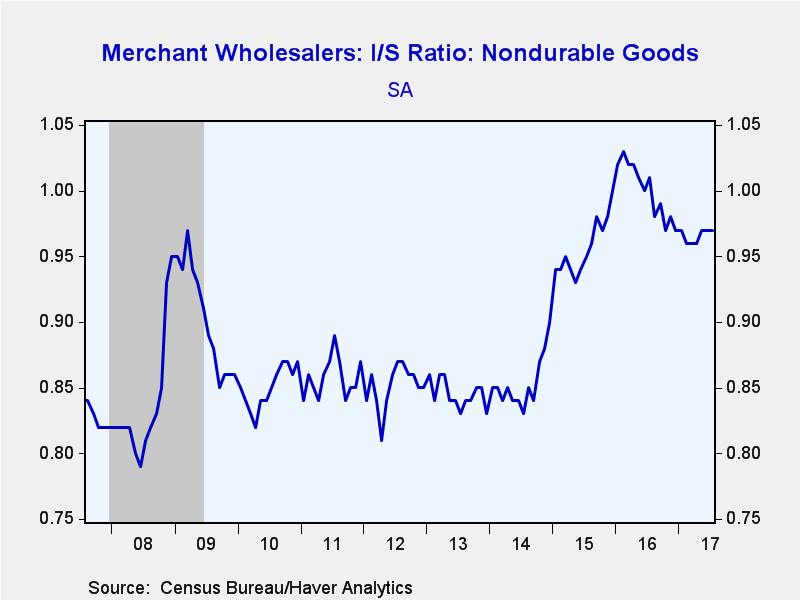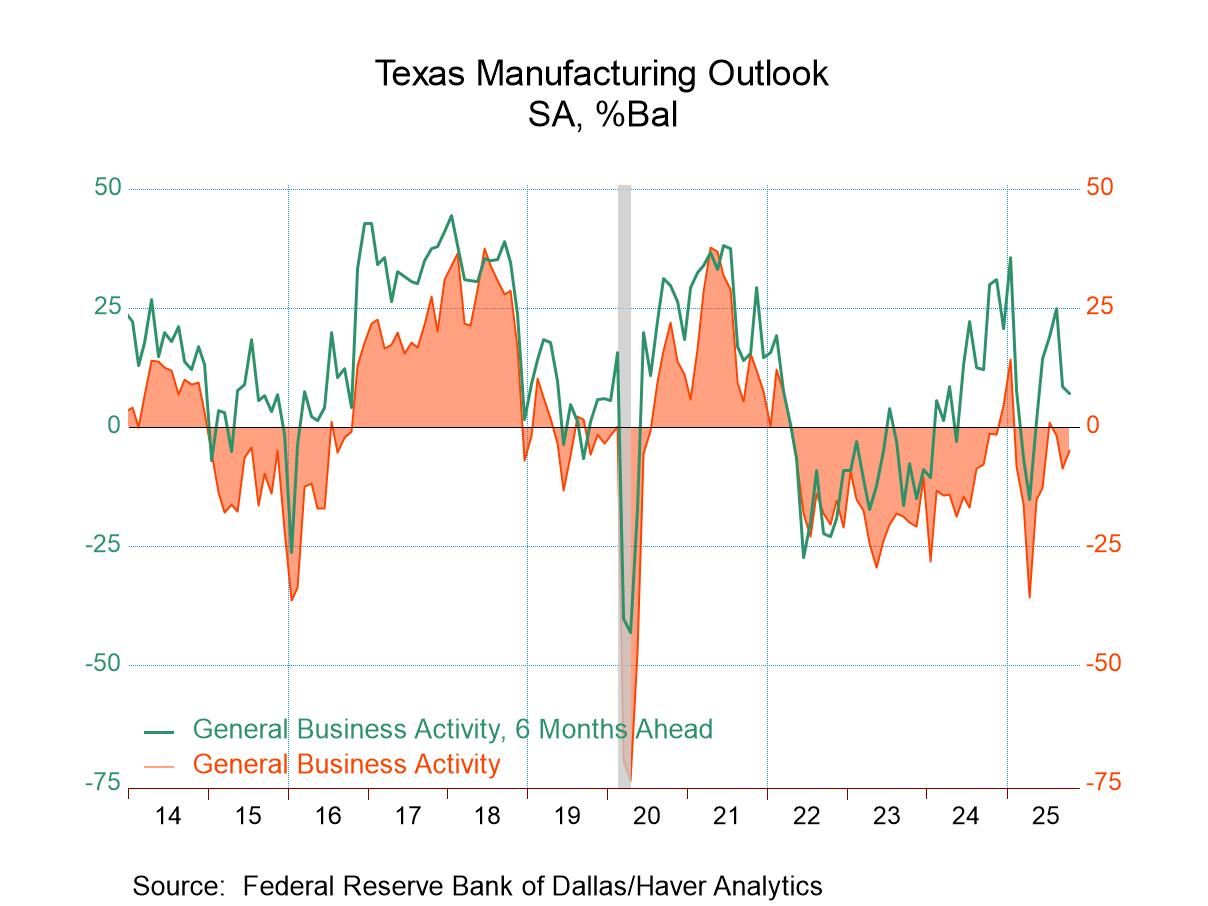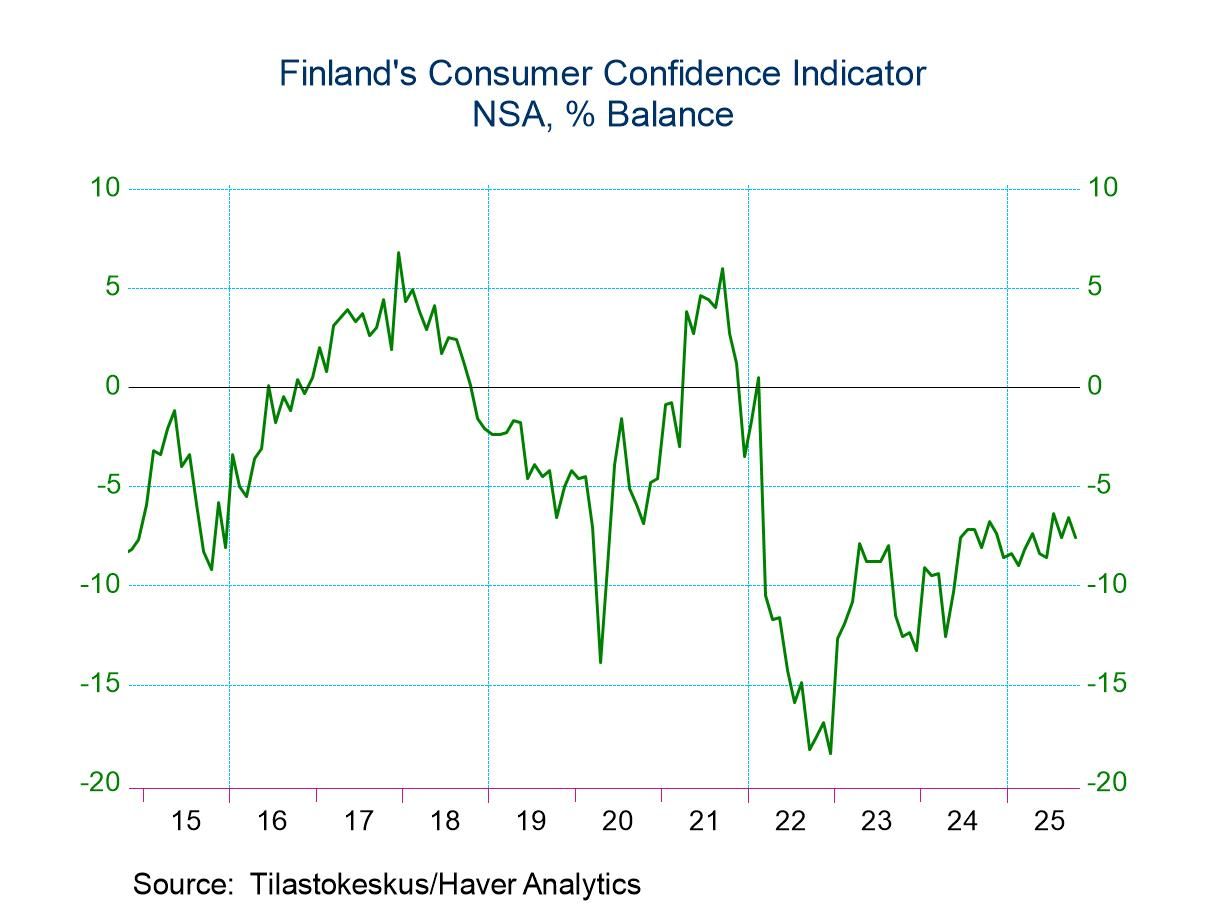 Global| Sep 08 2017
Global| Sep 08 2017U.S. Wholesale Inventories Rise While Sales Dip
by:Tom Moeller
|in:Economy in Brief
Summary
Inventories at the wholesale level during July increased 0.6% for the third consecutive month. June's increase was revised from 0.7%. Inventories rose a moderate 3.2% y/y. During the last three months, however, inventories rose at an [...]
Inventories at the wholesale level during July increased 0.6% for the third consecutive month. June's increase was revised from 0.7%. Inventories rose a moderate 3.2% y/y. During the last three months, however, inventories rose at an accelerated 7.5% annual rate.
Durable goods inventories increased 0.9% (4.2% y/y) following a 0.4% rise. Inventories of electronic goods jumped 2.6% (10.0% y/y) while machinery inventories strengthened 1.1% (-0.2% y/y). Motor vehicle inventories improved 0.2% (3.9% y/y), but furniture inventories eased 0.2% (4.9% y/y). Inventories of computers and peripherals slipped 0.1% (+13.4% y/y). Inventories of nondurable goods improved 0.2% (1.7% y/y), following a 0.9% rise. The value of petroleum inventories strengthened 2.3% (6.7% y/y) while chemical inventories jumped 1.0% (2.0% y/y). Apparel inventories notched 0.1% higher (-7.8% y/y), while paper and paper product stockpiles fell 1.0% (+1.4% y/y).
Wholesale sales eased 0.1% (+6.1% y/y), down for the fourth month in the last five. A 0.5% rise was expected in the Action Economics Forecast Survey.
Nondurable goods sales held steady (6.2% y/y) as petroleum sales gained 1.1% (13.8% y/y). Chemical sales jumped 3.5% (8.4% y/y) and apparel sales strengthened 1.5% (-4.9% y/y). Sales of paper products held steady (3.2% y/y) while grocery product sales fell 1.1% (+5.1% y/y). Durable goods sales eased 0.1% (+5.9% y/y). Computer sales slipped 0.1% (+2.4% y/y), but machinery sales rose 0.3% (5.1% y/y). Electrical equipment sales weakened 0.7% (+5.3% y/y) while motor vehicle distributors' sales slipped 0.8% (+8.2% y/y). Furniture sales gained 1.1% (-0.5% y/y).
The wholesalers' inventory-to-sales ratio rose to 1.30, up from April's low of 1.28.
The durable goods I/S ratio of 1.65 compared to the 1.74 high in January 2016. The machinery I/S ratio of 2.91 was reduced from the 2016 high of 3.16. The motor vehicles ratio of 1.80 declined y/y from 1.89. The furniture I/S ratio of 1.66 was up sharply from last year's low, while the metals ratio was reduced y/y from 2.22. The I/S ratio of 0.89 in computers and equipment was up sharply y/y. In the nondurable goods sector, the I/S ratio of 0.97 was down from 1.01 a year ago. The petroleum industry ratio of 0.42 compared to 0.45 one year earlier. The ratio in the chemical sector of 1.16 compared y/y to 1.24, and the ratio in the apparel sector eased to 2.07.
The wholesale trade figures are available in Haver's USECON database. The Action Economic Survey results are contained in AS1REPNA.
Understanding the Disconnect between Employment and Inflation with a low Natural Rate from Fed Governor Lael Brainard is available here.
| Wholesale Sector - NAICS Classification (%) | Jul | Jun | May | Jul Y/Y | 2016 | 2015 | 2014 |
|---|---|---|---|---|---|---|---|
| Inventories | 0.6 | 0.6 | 0.6 | 3.2 | 2.6 | 1.1 | 5.8 |
| Sales | -0.1 | 0.6 | -0.1 | 6.1 | -0.4 | -4.9 | 3.6 |
| I/S Ratio | 1.30 | 1.29 | 1.29 | 1.33 (July '16) | 1.33 | 1.32 | 1.21 |
Tom Moeller
AuthorMore in Author Profile »Prior to joining Haver Analytics in 2000, Mr. Moeller worked as the Economist at Chancellor Capital Management from 1985 to 1999. There, he developed comprehensive economic forecasts and interpreted economic data for equity and fixed income portfolio managers. Also at Chancellor, Mr. Moeller worked as an equity analyst and was responsible for researching and rating companies in the economically sensitive automobile and housing industries for investment in Chancellor’s equity portfolio. Prior to joining Chancellor, Mr. Moeller was an Economist at Citibank from 1979 to 1984. He also analyzed pricing behavior in the metals industry for the Council on Wage and Price Stability in Washington, D.C. In 1999, Mr. Moeller received the award for most accurate forecast from the Forecasters' Club of New York. From 1990 to 1992 he was President of the New York Association for Business Economists. Mr. Moeller earned an M.B.A. in Finance from Fordham University, where he graduated in 1987. He holds a Bachelor of Arts in Economics from George Washington University.



